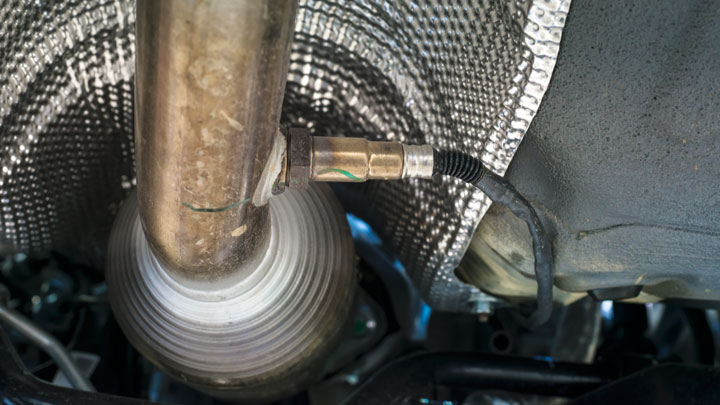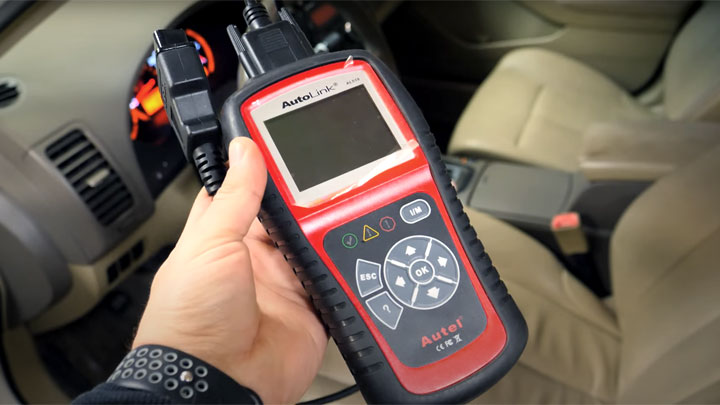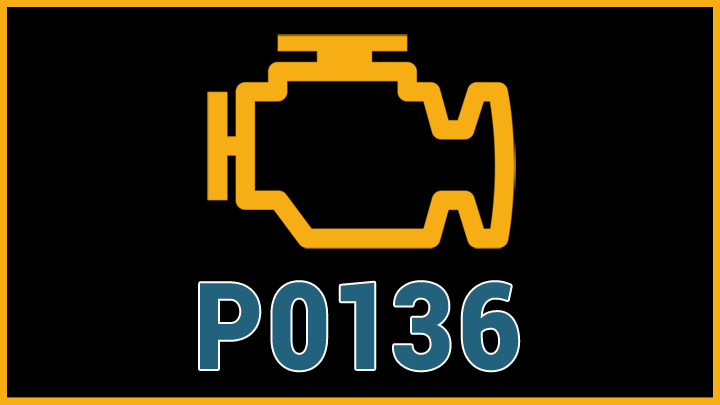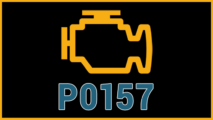Last Updated on July 13, 2022
Vehicle technology is a far cry from what it was some 40-50 years ago. What once ran by purely mechanical means, is now directed by a highly sophisticated network of computer modules and sensors.
This technology grew out of increased cries for environmental conservancy during the 1970s, at which time the EPA levied a wide array of new emissions-based mandates.
As a result, automotive manufacturers scrambled to outfit their vehicles with the latest in emissions control equipment, including new onboard monitoring software. Included in these developments was the implementation of standardized oxygen sensors, which monitored combustion efficiency, as observed through an engine’s exhaust output.
Though O2 sensors are now standard fare across all avenues of automotive production, they are far from trouble-free in operation. Luckily, the failure of a vehicle’s O2 sensor is often easy to discern, as a corresponding diagnostic trouble code is typically recorded.
This is the case with DTC P0136, which alludes to a relative loss of O2 sensor signal voltage, indicative of an operational issue. Read on to learn more about DTC P0136, as well as how to handle such issues, should they be encountered in the future.
What Does Code P0136 Mean?
Diagnostic trouble code P0136 is indicative of an issue with a vehicle’s post-catalyst oxygen sensor (bank 1, sensor 2). Simply put, the affected vehicle’s PCM has determined that the signal voltage from the offending O2 sensor has remained below the expected range for too long or is simply irrational.
This is worthy of note, due to the fact that modern vehicles rely on O2 sensor feedback, in order to calculate fuel trims. In essence, a vehicle’s O2 sensor provides an input for an algebraic equation, used to determine how much fuel to dose for each engine bank. A disruption in this feedback compromises the PAM’S ability to calculate such numbers.
DTC P0136 can stem from a number of underlying causes, including a faulty O2 sensor, or compromised exhaust catalyst. No matter the cause, a check engine light will remain illuminated until normal system function is restored.
Related DTCs: P0131, P0132, P0133, P0134, P0135, P0137, P0138, P0140, P0157
Symptoms of Code P0136
Diagnostic trouble code P0136 is seldom accompanied by any additional symptoms. This is due to the fact that a vehicle’s PCM is capable of rationalizing this data and falling back upon generic values to facilitate proper engine operation.
If one were to observe any symptoms related to DTC P0136, outside of the sudden illumination of a vehicle’s check engine light, it would likely come in the form of a slight reduction in fuel economy. In most cases, a vehicle’s engine will run slightly richer than it otherwise would.
The onset of a DTC P0136-related condition will also cause issues when taking your vehicle for regular emissions testing, in locations where such inspections are mandated. This can make it difficult or impossible to relicense your vehicle, until the issue at hand had been corrected.
Causes of Code P0136

Diagnostic trouble code P0136 can be caused by a number of different underlying issues. Understanding each of these potential issues can prove valuable when attempting to diagnose the problem at hand.
The following are several of the most common causes of DTC P0136.
- Faulty O2 sensor
- Failed Catalytic Converter
- Exhaust leak near O2 sensor
- Substantial intake leak
- Damaged O2 sensor wiring
- Corroded O2 sensor connector
Is Code P0136 Serious?

Diagnostic trouble code P0136 is generally considered to be moderately serious in nature. This stems primarily from the fact that most vehicles exhibiting this condition, tend to run richer than they otherwise would.
As a result, unburnt fuel is fed downstream, through an engine’s exhaust, likely compromising the affected vehicle’s catalytic convertor with time.
As mentioned above, it will also be nearly impossible to achieve emissions compliance, when a vehicle is exhibiting such a condition. This, in itself, can become a major pitfall in any location where regular emissions testing is required.
How to Fix Code P0136
The following steps will assist you in diagnosing and repairing the root cause of your vehicle’s P0136 diagnostic trouble code. As always, it is highly advised to consult factory-specific service literature for your particular make and model of vehicle, before attempting any repairs of this type.
#1 – Check For Presence of Additional DTCs

Before beginning the diagnostic process, you should carefully check your vehicle for the presence of additional trouble codes, with a quality scan tool. Any fault codes that are found, should be carefully diagnosed and remedied before proceeding.
#2 – Carefully Inspect O2 Sensor and Connected Circuit
Begin by Carefully inspecting the corresponding O2 sensor for obvious signs of damage. Likewise, check for any points of concern within the affected O2 sensor’s wiring pigtail/connector.
Repair any faults of this nature that are uncovered during an inspection.
#3 – Analyze Value Fluctuations
With the use of an OBD2 scan tool, analyze feedback from the affected O2 sensor. In doing so, check to see if these values fluctuate rapidly. If this condition is observed, the O2 sensor itself is likely at fault.
#4 – Perform Vacuum Test
With the use of an appropriate vacuum gauge, perform a vacuum leak-down test. Any vacuum leaks uncovered during such testing should be remedied immediately.
#5 – Test For Exhaust Leaks
Next, an automotive smoke machine can be plumbed into a vehicle’s exhaust, in a bid to locate any offending exhaust leaks. Any leaks that become evident during this step, should be repaired before proceeding.
#6 – Replace Oxygen Sensor
If steps #1-#5 have failed to uncover the source of your vehicle’s P0136 diagnostic trouble code, the affected O2 sensor is likely at fault. Replace this sensor, clear all diagnostic trouble codes, and take your vehicle for a lengthy test drive to confirm the repair.




